For use in the garden, four types of gazebos are best suited: Folding gazebos, wooden gazebos, steel gazebos and party tents. However, due to their different designs and material properties, they are all suitable for different applications.
Year-round gazebo – waterproof, weatherproof and heatable
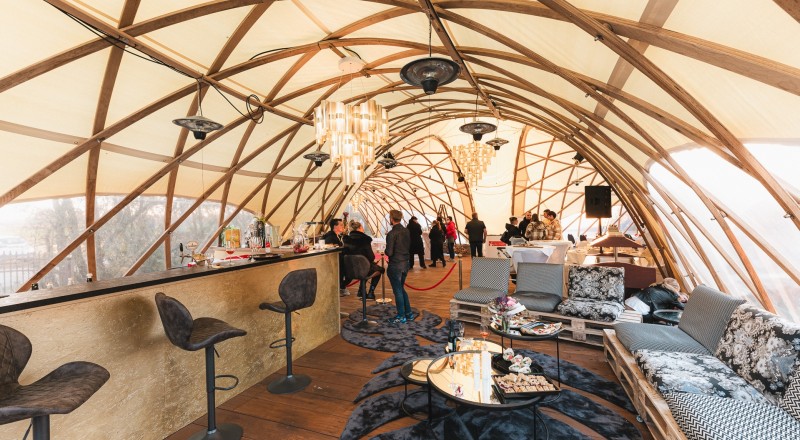
Have you been wondering whether you can use your gazebo all year round and not just for the classic BBQ? With the right selection and some background information, this is no problem!
But is an aluminium gazebo better suited in winter than a model made of steel, iron or wood? And how can you ideally use your garden pavilion even in the cold season? What is the ideal gazebo to buy?
In the following article you will learn everything you need to know to enjoy your gazebo all year round.
From steel to folding gazebos: The four most important types of gazebos
The folding gazebo
Whether as a supplement to the garden house, for the next garden party or as a barbecue gazebo – a folding gazebo can be taken anywhere and is therefore ideally suited for mobile use. It stands out with its low weight and its practical size. When folded, it requires little storage space, but is still assembled within a few minutes, as its scope of delivery only needs to include a few components: Folding linkages, roof tarpaulin and side tarpaulins.Depending
on the weather conditions, it can be used both open and closed. However, in terms of stability and load-bearing capacity, a folding gazebo cannot compete with stationary gazebos.
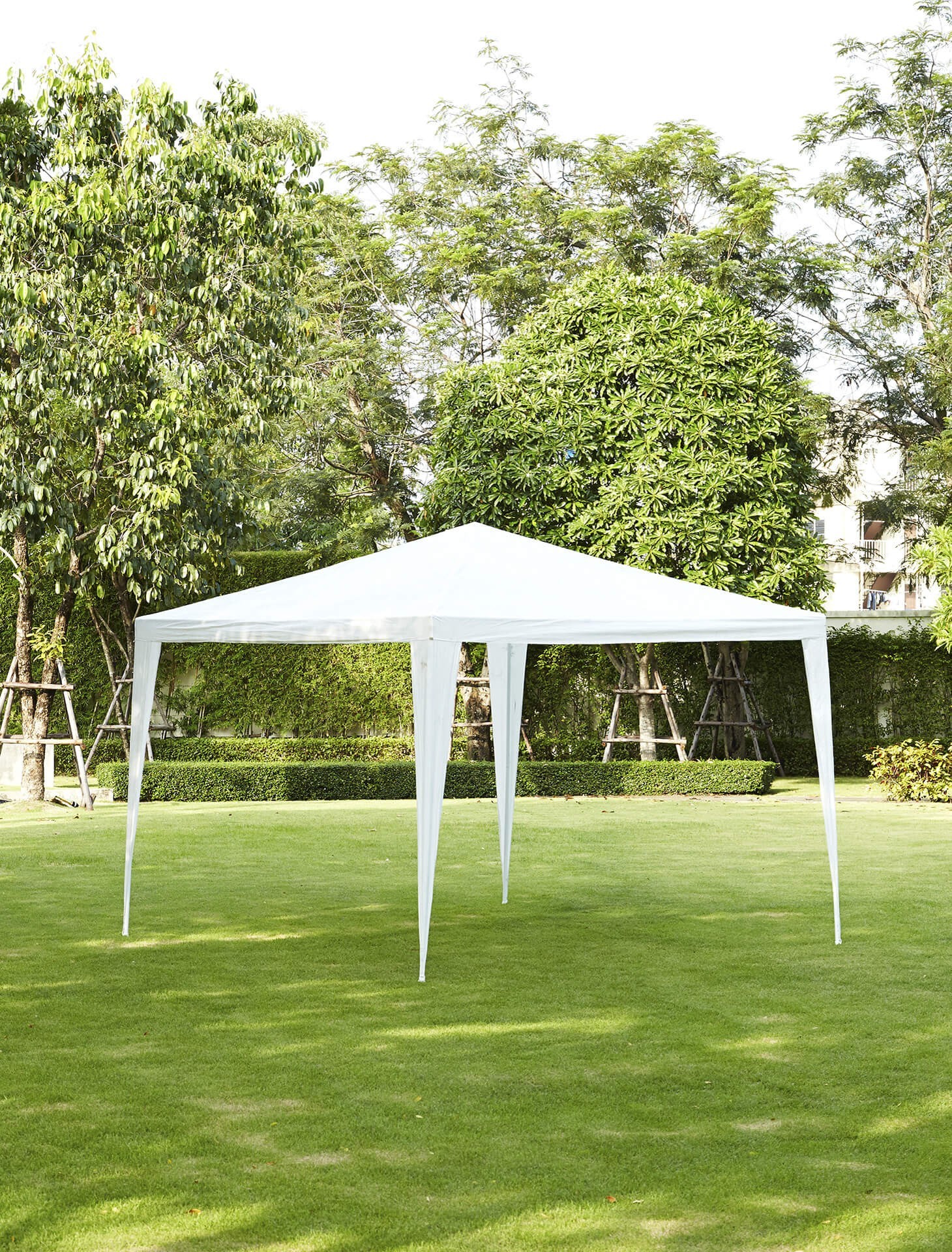
The party tent
A high-quality marquee for parties or a wedding, on the other hand, convinces with increased stability thanks to higher weight. The construction is simpler and less susceptible, but this is reflected in a more robust design. In addition, there is no folding mechanism, thus restricting mobility.
Since party tents are available in a wide range of sizes, you will find the right type for any celebration. In direct comparison with folding gazebos, the construction of a marquee takes more time, as it consists of more individual parts.
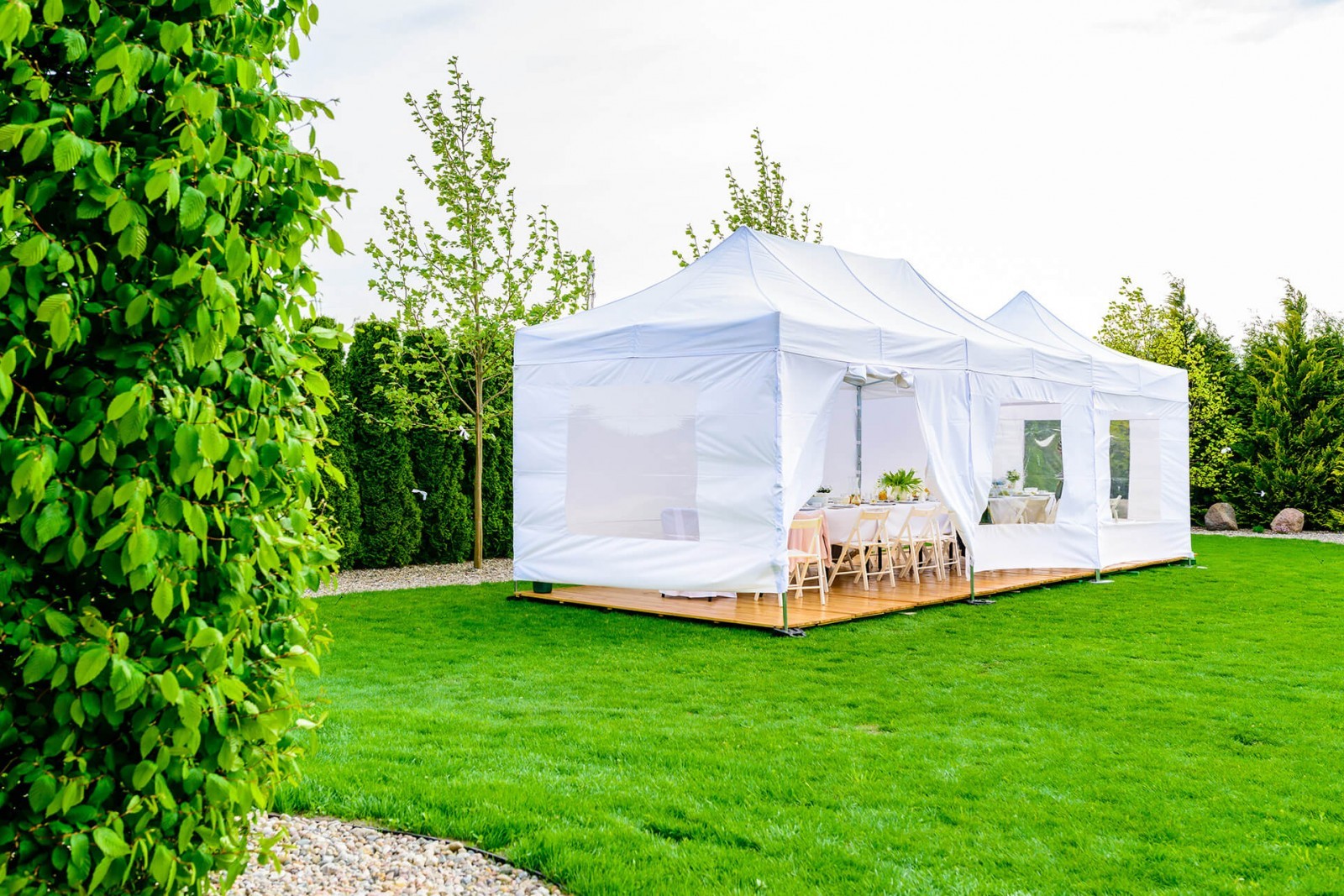
The metal gazebo (steel or aluminum)
Due to their high weight and the stable anchoring, metal gazebos are not only stable, but above all durable and robust. Nevertheless, they are set up and dismantled comparatively quickly, which makes a change of location and storage in winter very easy.
Depending on requirements and weather conditions, they can be used both open and closed, as the side panels are removable or decorative. The side panels also offer protection from wind and rain and are ideal for installing mosquito nets on warm summer evenings
. Models made of aluminum, which are available from brands such as Palram, Paragon Outdoor or Sojag have stood the test of time.
If you have to accept marquees with a simple look, stable gazebos in different designs are the go-to choice: From classic to modern, in anthracite, white or other colors, nothing remains unfulfilled. Place a beautiful garden furniture set under the gazebo to feel like you are in a garden in Verona, Messina or Milano in no time.
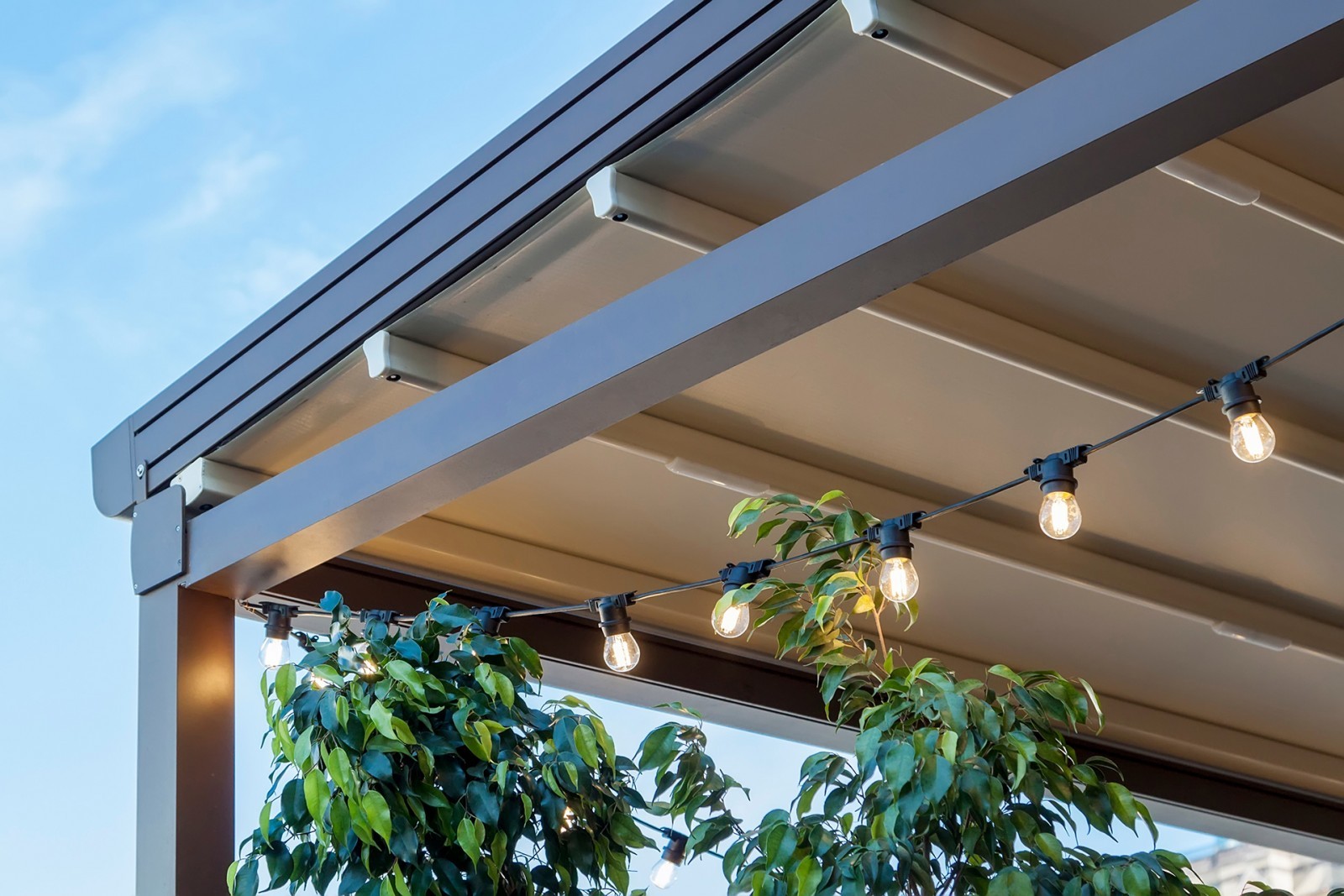
The wooden gazebo
Wooden gazebos are another alternative for permanent, stationary use. Wood is a timeless material that not only impresses visually, but also offers several advantages in gazebos.
Thick wooden beams and a high weight allow for a very solid construction and good stability. In addition, with intensive care, wood is a very durable material and available in many variants.
A wooden gazebo is not as mobile as its plastic peers. As a rule, it remains where it was constructed – on the one hand, because it is tied to a foundation, and on the other hand, because it is difficult to dismantle. You should therefore buy a wooden gazebo if you wish for it to remain in one place and you have already chosen a sufficiently large and suitable area in your outdoor space.
A metal gazebo, on the other hand, is much easier to reposition or dismantle.
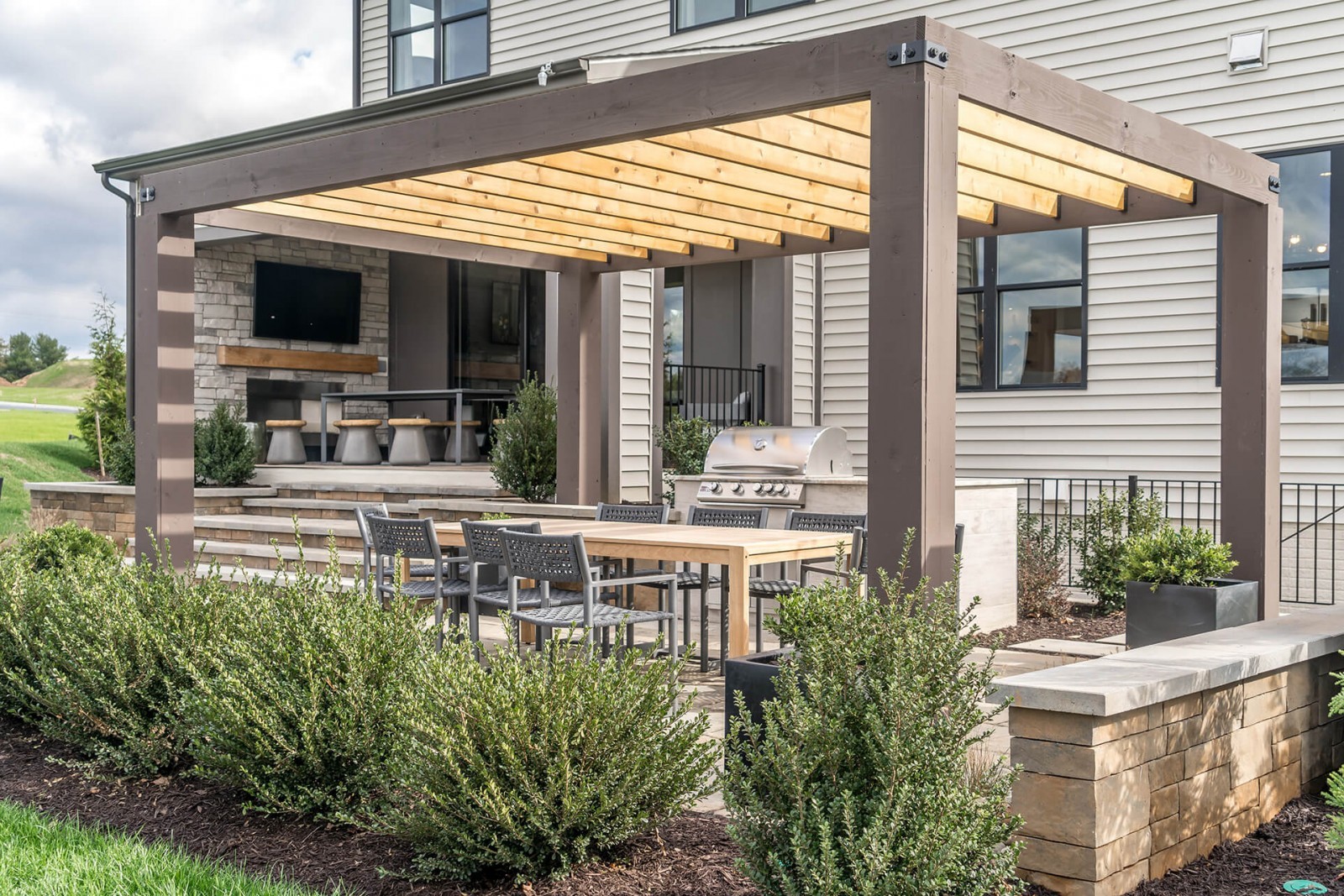
What is important with regards to weatherproof garden gazebos
The use your gazebo throughout the year depends on good wind and weather resistance. In the following section we have summarized the points you should pay attention to in order to be able to defy the weather conditions and get comfortable in your gazebo.
Waterproof roofing
As already mentioned, there are gazebos made of different materials. While aluminum gazebos are often powder-coated and therefore generally insensitive to water, wood often swells, tears or warps when exposed to moisture. Intensive care including regular sealing with special sealants is required to protect the natural material from water.
Pure steel could begin to rust due to prolonged exposure to moisture. To prevent this, small proportions of chromium, copper, nickel or phosphorus must be added to make the material weather-resistant. However, since this already happens during production, steel gazebos are rather insensitive to rain showers and moisture.
A garden gazebo with a fabric roof textile side panels often does not withstand the rain in the long run. You should take off the tarpaulins to protect the fabric. However, a larger budget allows for the purchase of waterproof textiles that you can attach to the gazebo even in the event of rain.
How stable does a gazebo have to be?
The type of construction and the type of fastening determine the level of wind-resistance of your garden gazebo. A fixed, stable gazebo with a screwed construction and foundation is normally able to withstand strong winds.
Folding gazebos and party tents with folding linkage, on the other hand, should be weighed down with sandbags and tent feet or tensioned with straps and pegs. Otherwise, they could be caught by strong gusts of wind and blown away or damaged.
The wind forces that your gazebo has to withstand depends primarily on the speed at which the wind hits the gazebo. A division classifies wind forces from 0 (little wind) to 12 (hurricane). The load on the pavilion, depending on the wind force, is called the wind load.
In Germany, for example, four wind load zones are distinguished, which reflect the usual regional wind loads in terms of speed and speed pressure. The northern part of Germany is most at risk. The coasts of Lower Saxony, Schleswig-Holstein and Mecklenburg-Western Pomerania have wind load zones of 3 and 4 and are therefore national leaders. If, on the other hand, you live in the south of the country, you need to worry less about your gazebo: The majority of these regions is located within the wind load zone 1.
Is a gazebo winter-proof?
Winter-proof gazebos - snow and frost are not uncommon in the German winter and should definitely be taken into account when choosing the material of your garden gazebo if you want to use it all year round.
In addition, the foundations of fixed garden gazebos has to be frost-proof. If water penetrates the foundation, it expands during freezing and causes unsightly damage to your gazebo. A drainage layer of gravel and a depth of at least 80 cm secure your foundation during severe winters, because frost usually does not penetrate deeper into the ground.
Furthermore, it should be noted that gazebo roofs have to withstand certain snow loads in winter. Not only the snow height, but also the liquid value and the density of the snow play an important role. In principle, the drier the snow, the lower the load.
Especially in regions prone to snow, the roof of your gazebo should be able to withstand heavy loads. A hardtop gazebo or a model with a solid polycarbonate roof is ideal in such a case.
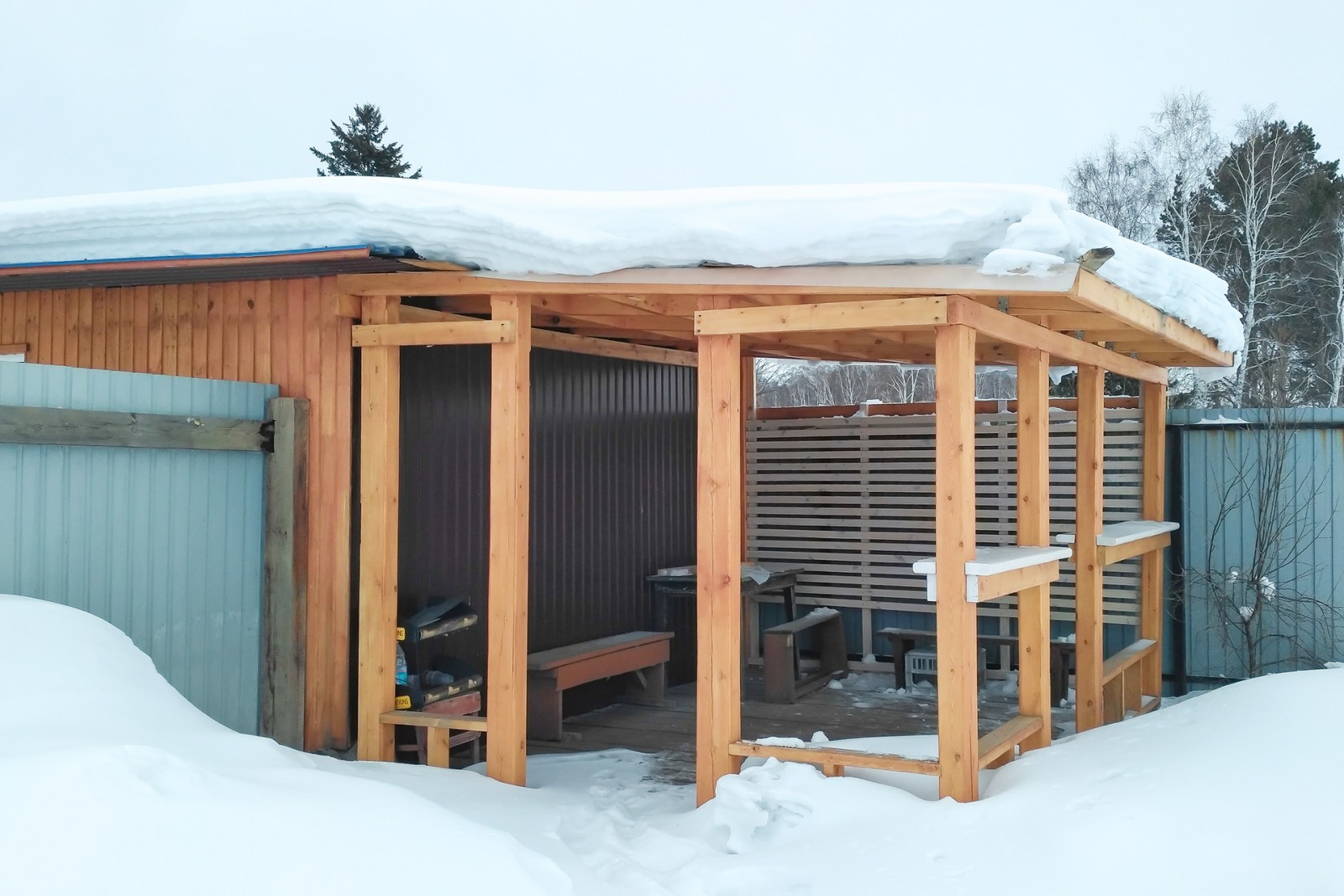
UV-resistant materials
Permanent UV radiation can damage the material of your gazebo. Over time, it not only fades, but often becomes cracked or brittle. The good news: You can counteract this material deterioration through sunlight by paying attention to lightfast fabrics and curtains from the outset and treating the wood exclusively with UV protection oil. If you want to save yourself the extra effort, maybe a metal gazebo is more suitable? Aluminum and weather-resistant steel are UV-resistant and do not need to be specially cared for.
Which gazebo types can be used all year round?
The material and its care, the structure and the fastening determine whether a gazebo is suitable for year-round use.
Many materials are naturally wind- and weatherproof. Some types of gazebos, such as wooden or folding gazebos, however, require regular care for ideal protection. Aluminum gazebos or similar models made of steel are designed for continuous use outdoors.
When choosing your garden gazebo, you should consider your requirements and take regional environmental factors such as sun protection, wind and snow loads into account. This way you can use and enjoy your weatherproof gazebo all year round.
Many benefit under one roof – the classic gazebo in advanced design
You think there is no perfect gazebo? Then you haven't seen the sustainable STROHBOID products yet. Better than any terrace roof or pergola, the all-rounder is suitable for all weather conditions. Produced carbon-neutrally from native beech wood, the gazebo is able to withstand any weather – a deluxe garden tent, sustainability included.
Wind gusts of up to 170 km/h and loads of up to 200 kg/m2 of snow mean nothing to the Strong Variant, while moisture won't leaves any damage to the outer material. Whether sunshine, rain or cool temperatures – the heatable gazebo with its lightweight wooden construction creates a feel-good atmosphere in harmony with nature.
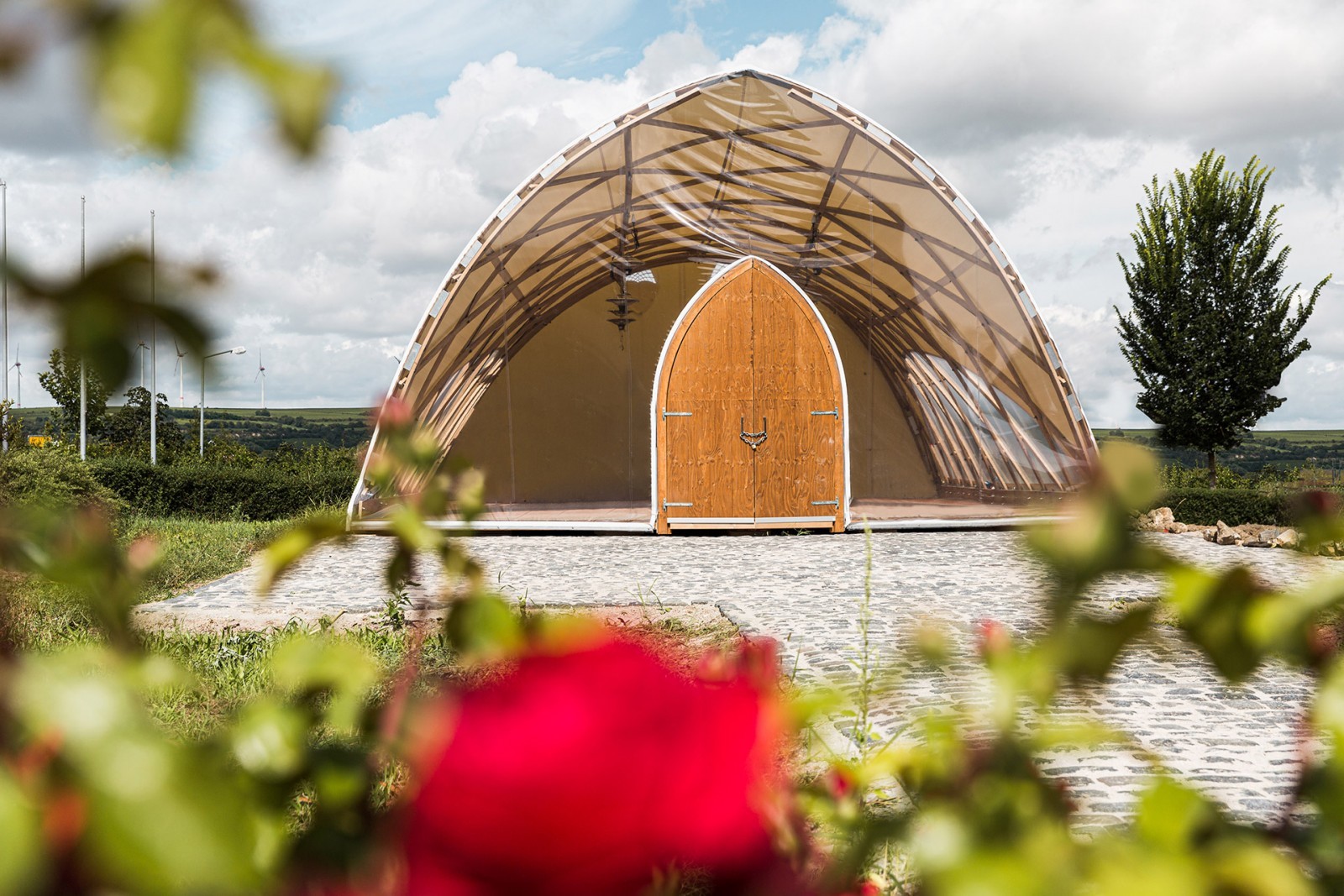

Categories